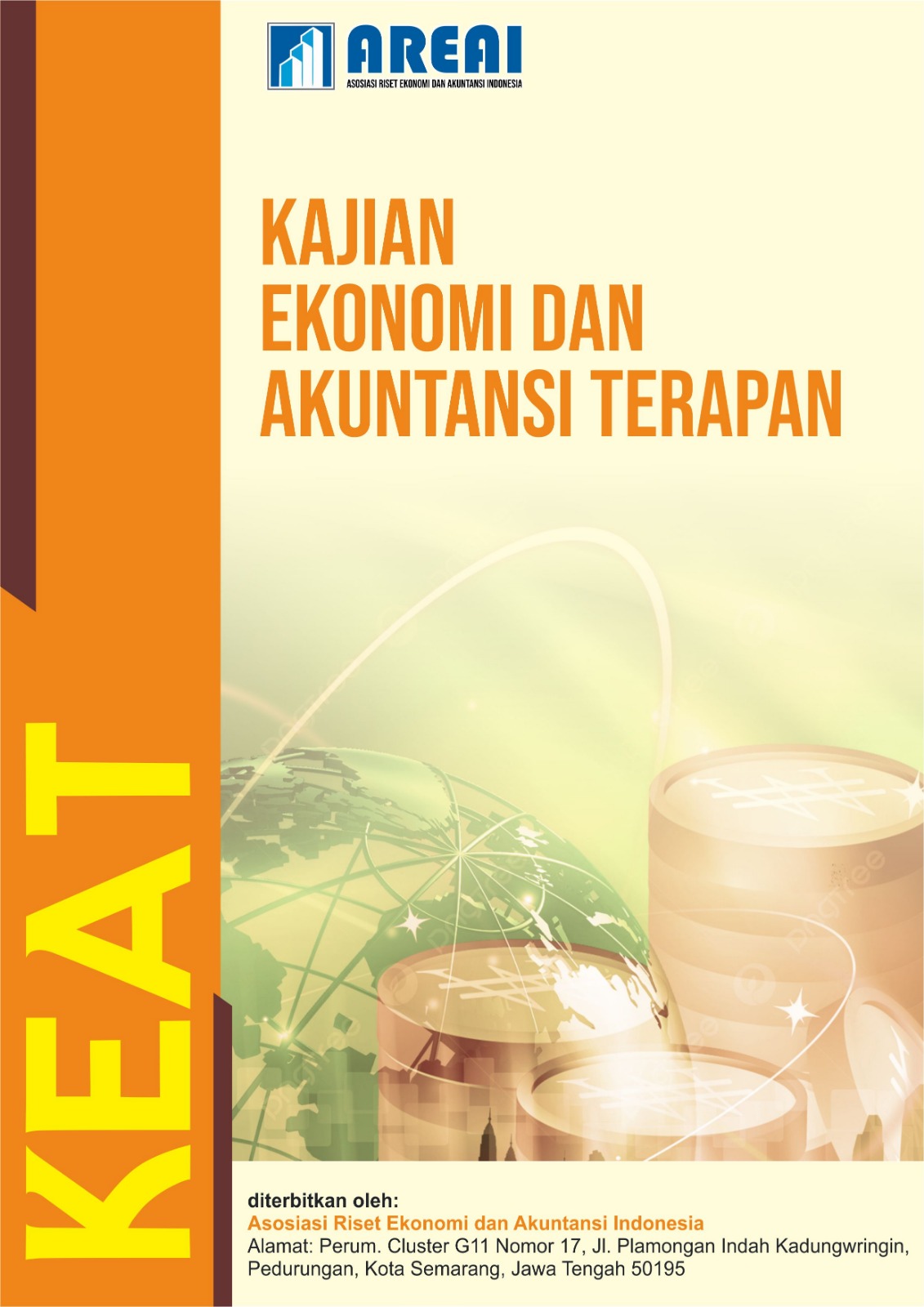Utang Luar Negeri: Menelisik Faktor Penyebab, Kondisi di Indonesia, dan Dampaknya Terhadap Perekonomian
DOI:
https://doi.org/10.61132/keat.v1i4.691Keywords:
Foreign Debt, Foreign Loans, FinancingAbstract
Foreign debt (ULN) is one of the important issues in the dynamics of the global economy, especially for developing countries. This study aims to analyze the causal factors, conditions of ULN in Indonesia, and its impact on the economy. Qualitative research methods with a literature approach were used to collect data from various written sources. The results of the study indicate that the factors causing ULN in Indonesia include the inability to provide sufficient development funds, an imbalance between investment and savings, and dependence on imported goods. The impact of ULN on the Indonesian economy is divided into positive and negative impacts. The positive impacts include effective sources of development financing, recognition of the country's ability to pay off debt, the establishment of relations between countries, and encouragement of domestic policy improvements. The negative impacts include the burden on the APBN, reduction in spending strategies, the influence of creditor countries in policy making, and the stigma of being a failed state. The study concludes that ULN in Indonesia needs to be managed wisely by considering long-term risks. Some recommended solutions include delaying principal debt payments, changing payment obligations, and reducing principal debt. This study provides important information for policy stakeholders and the Indonesian public in understanding the importance of wise ULN management to encourage sustainable economic growth and improve people's welfare.
Downloads
References
Aini, W. (2023). Pengaruh utang luar negeri terhadap pertumbuhan ekonomi Indonesia. Indo-Fintech Intellectuals: Journal of Economics and Business, 3(1), 1–19.
Arsyad, L. (2022). Ekonomi pembangunan lanjutan (2nd ed.). Universitas Terbuka.
Bank Indonesia. (2024). Statistik utang luar negeri Indonesia (Oktober 2024).
Bilatula, D. Y. Y., Olilingo, F. Z., Payu, B. R., & Arham, M. A. (2023). Faktor-faktor yang mempengaruhi utang luar negeri di Indonesia. Jurnal Studi Ekonomi dan Pembangunan, 1(2), 1–9. https://doi.org/10.37905/jsep.v1i2.22173
Cahyaningrum, H., Nadzeva, G., Ramadhani, N. T., & Nurdiansyah, D. H. (2022). Analisis faktor-faktor yang mempengaruhi utang luar negeri di Indonesia tahun 2015–2019. Wacana Ekonomi (Jurnal Ekonomi, Bisnis dan Akuntansi, 21(1), 39–54. https://doi.org/10.22225/we.21.1.2022.39-54
Darmawan, I. (2022). Dampak utang luar negeri terhadap perekonomian Indonesia. Jurnal Pendidikan Ekonomi dan Akuntansi, 15(2), 57–69. https://doi.org/10.24071/jpea.v15i2.5077
Friska Cahya Yumanda, & Juliannisa, I. A. (2023). Analisis faktor-faktor yang mempengaruhi utang luar negeri di Indonesia. JEMMA: Jurnal of Economic, Management, and Accounting, 6(2), 133–152.
Hamid, E. S. (2018). Perekonomian Indonesia (3rd ed.). Universitas Terbuka.
Hasan, M. (2019). Kajian tata kelola utang negara untuk pembangunan nasional. SEKNAS FITRA: Sekretariat Nasional Forum Indonesia Untuk Transparasi Anggaran.
Irawan, T. T. (2020). Perekonomian Indonesia: Fakta, tantangan, dan kebijakan (1st ed.). Unpak Press.
Istiawan Khan, H., Sari, K., & Kurniawan, M. (2024). Pengaruh ekspor, impor, dan utang luar negeri terhadap pertumbuhan ekonomi di Indonesia pada tahun 2013–2022. Journal Economic Excellence Ibnu Sina, 2(2), 120–139. https://doi.org/10.59841/excellence.v2i2.1327
Sabil, M. D. M., Soeharjoto, S., Nusantara, A., Ardana, Y., Fahrika, A. I., Utami, S., Pradaning Ratri, A., Rahmawati, R., SBM, N., Malau, N. A., & Nawatmi, S. (2022). Perekonomian Indonesia (1st ed.). PT Global Eksekutif Teknologi.
Sari, R. (2015). Alternatif kebijakan pengentasan utang luar negeri. Info Singkat Ekonomi dan Kebijakan Publik, VI(12), 13–16.
Sari, W. R., Andriani, A., Nabilla, F. L., & Putri, D. F. (2023). Perkembangan utang luar negeri Indonesia tahun 2019 sampai 2023 berjalan. Kampus Akademik Publishing Jurnal Ilmiah Ekonomi dan Manajemen, 1(4), 72–78.
SR, A. A. (2020). Investasi, utang pemerintah dan kualitas pembangunan. Journal Koperasi dan Manajemen, 1(1), 57–69.
Umi, N. T., Apriani, R., Sari, M. P., Pundarika, R., & Noviarita, H. (2022). Dampak krisis ekonomi terhadap tingkat pertumbuhan di Indonesia dalam pandangan Islam. Salam (Islamic Economics Journal, 3(2), 101. https://doi.org/10.24042/slm.v3i2.10306
Downloads
Published
How to Cite
Issue
Section
License
Copyright (c) 2024 Kajian Ekonomi dan Akuntansi Terapan

This work is licensed under a Creative Commons Attribution-ShareAlike 4.0 International License.





